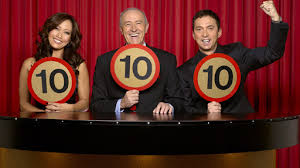Better Public Speaking and Presentation skills
” Essential skills for career acceleration”
Think of the last really memorable talk or presentation that you attended.
Now, was that easy to do, or did you really have to really think hard to remember one?
Sadly, too many presentations are easy to forget. And that’s a big problem because the only reason the presenter gave the talk was to communicate something to you!
However, there are 4 basic things that you can do to ensure that your verbal messages are understood – and remembered – time and time again.
Although somewhat obvious and deceptively simple, these are:
- Understand the purpose of the presentation – to persuade, to delight, to inform?
- Keep the message clear and concise – stick to the rule of “threes”
- Be prepared – practice, practice, practice
- Be vivid when delivering the message – use words that create imagery – use body language to best effect
Understand what you want to achieve
Before you start working on your talk or presentation, it’s vital that you really understand what you want to say, who you want to tell and why they might want to hear it. To do this, ask yourself: 6 wise questions: Who? What? How? When? Where? Why?
Who are you speaking to? What are their interests, assumptions and values? What do they share in common with others; how are they unique?
What do you wish to communicate? One way of answering this question is to ask yourself about the ‘success criteria’. How do you know if and when you have successfully communicated what you have in mind?
How can you best convey your message? Language is important here, as are the nonverbal cues discussed earlier. Choose your words and your nonverbal cues with your audience in mind. Plan a beginning, middle and end. If time and place allow, consider and prepare audio-visual aids.
When? Timing is important here. Develop a sense of timing, so that your contributions are seen and heard as relevant to the issue or matter at hand. There is a time to speak and a time to be silent. ‘a Presenter that goes over the scheduled time is not always received well.’
Where? What is the physical context of the communication in mind? You may have time to visit the room, for example, and rearrange the furniture. Check for availability and visibility if you are using audio or visual aids.
Why? In order to convert people from “hearers” into listeners, you need to know why they should listen to you – and tell them if necessary. What disposes them to listen? That implies that you know yourself why you are seeking to communicate – the value or worth or interest of what you are going to say.
Keep it simple… content is NOT King, it’s the how that really matters!
When it comes to wording your message, less is more. You’re giving your audience headlines. They don’t need to and are usually not expecting to become experts on the subject as a result of hearing your talk. I suggest you have a leading beginning that informs your audience what you are going to talk about… and help your audience follow your thought process by providing the main points you will cover. Lead into your first point and link in to the other two. Provide a summary of what you just said as a conclusion to your presentation. ” Say what you are going to say, say it, and say it again”
If you’re using slides, limit the content of each one to a few bullet points, or one statement or a very simple diagram
Be prepared, that way you appear & feel the calm!
Preparation is the KEY! In fact, it is one of the most important factors in determining your communication successes. When possible, set meeting times and speaking and presentation times well in advance, thus allowing yourself the time you need to prepare your communications, mindful of the entire communication process By paying close attention to each of these stages and preparing accordingly, you ensure your communications will be more effective and better understood. Practice in front of a mirror, the dog, your family and friends…. it WILL help!
Of course, not all communications can be scheduled. In this case, preparation may mean having a good, thorough understanding of the office goings-on, enabling you to communicate with the knowledge you need to be effective, both through verbal and written communications.
Unforgettable delivery means paying attention to the non-verbals!
Your delivery of your speech or presentation will make or break it, no matter how well you’ve prepared and crafted your clear, concise message. Some useful tips for keeping your presentation vivid include:
- Use examples to bring your points to life
- Keep your body language up-beat – don’t stay stuck behind a lecture!
- Don’t talk to fast. Less is more here too. Pauses are effective.
- Use a variety of tones of voice
- Use visual aids.
Most of all try to enjoy the moment! Remember that your audience wants to see you succeed, they want to spend quality time discovering new information or being entertained.
All the very best!

